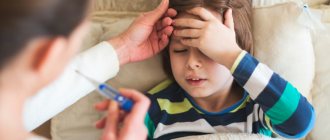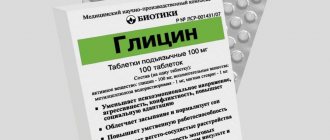Numerous stresses that constantly accompany a person have a negative impact on the nervous system and become the main cause of psychological stress and disruption of the functioning of organs and systems. All this ultimately leads to depletion of internal resources, deterioration of immunity and the development of anxiety disorders.
The symptoms of the disease can be similar to migraine, osteochondrosis, heart attack and a number of other conditions, so consultation with a neurologist is mandatory.
Reasons for the appearance of neurosis against the background of VSD
In essence, neurosis is a state of exhaustion of the nervous system, which occurs during prolonged and intense stressful situations, unresolved internal conflicts and is manifested by a variety of physical and mental symptoms.
Among the physical ones there are:
cardiac or headaches;- feeling of weakness, fatigue;
- dizziness, darkening of the eyes;
- sleep disturbance (difficulty falling asleep, shallow sleep, frequent awakenings, feeling tired in the morning);
- GCT disorders (poor appetite, abdominal pain, dysfunction of the intestines and stomach);
- autonomic disorders (excessive sweating, pressure changes, feeling of irregular heartbeat).
Psychiatric include:
- hypochondriacal syndrome;
- increased anxiety, attacks of panic and fear;
- mood variability;
- communication problems;
- irritability, nervousness;
- high sensitivity to external stimuli: light, sounds, smells;
- low stress resistance.
The clinical signs of VSD are almost the same, however, in dystonia, somatic disorders predominate. The causes of these diseases largely coincide:
- prolonged emotional or physical stress;
- lack of sleep;
- bad habits;
- chronic diseases;
- poor nutrition;
- traumatic brain injuries;
- changes in hormonal levels;
- osteochondrosis of the cervical vertebrae.
It is easy to see that both the causes and main symptoms of VSD and neurosis are very similar. Doctors often confuse these conditions, or both diseases are present in one patient.
Symptoms of VSD
As you can see, the diagnosis of VSD in Yeisk is primarily aimed at identifying the type of functional disorder. In this regard, one should consider the symptoms of VSD, which can be classified as general, optional and unclear:
- feeling of lack of air;
- shortness of breath, difficulty or rapid breathing;
- impaired body thermoregulation, cold extremities;
- sweating;
- disorders of the genitourinary system (frequent urination);
- dizziness, nausea, fainting;
- depression, tearfulness, anxiety, insomnia.
Treatment
First of all, if characteristic symptoms appear, you need to consult a doctor to undergo all examinations and establish an accurate diagnosis. This is very important, since dangerous diseases such as coronary heart disease or depression can be hidden under the guise of vegetative-vascular dystonia or neurosis.
Both neurosis and VSD require almost the same treatment. In this case, an integrated approach is used using medications, psychotherapy, physical therapy, and physiotherapeutic methods. It is also very important to follow preventive recommendations that have a greater impact on the causes of the disease.
Of course, first of all it is necessary to restore the patient’s psyche, because this is precisely the main reason. The doctor must identify factors, including hidden ones, that contributed to the development of the disease, and help the patient fight them, teach him to control stress. Modern medicine uses the approaches of psychoanalysis and cognitive behavioral psychotherapy. Meditation and auto-training are considered very effective preventive methods.
To relieve unpleasant symptoms, drug treatment is used. The following groups of drugs are used:
- antidepressants;
- sedatives;
- beta blockers;
- vitamins.
Physiotherapy has a complex effect on the body, is well tolerated by patients and has almost no contraindications. Its main methods include:
- acupuncture;
- electrophoresis;
- massage;
- water procedures.
What is VSD?
The diagnosis of VSD is made to a patient when he exhibits vague complaints and symptoms that do not fit the description of any disease. Among themselves, specialists quite often call this condition in their patients “diagnostic garbage”, and an entry may appear on the card - psycho-vegetative syndrome, vegetative-vascular dystonia, neurocirculatory dystonia, SVD of the heart.
But in reality the situation is much worse than it looks on paper. The patient needs to clearly understand that such diagnoses indicate that:
- As a result of the diagnosis, the doctor did not find the real reason that causes these symptoms. And recording the VSD allows us not to conduct further research.
- The person is not given adequate treatment, in which case the condition worsens. And those medications that were prescribed are just an imitation of treatment. In fact, a person’s rights to cure in this case are actually limited, because he has a diagnosis, which is not a diagnosis at all. It turns out to be such a vicious circle.
- The result of such unnecessary treatment does not improve the condition, but side effects from taking medications are to be expected.
If this diagnosis is made during the first visit to the doctor, then it is necessary to change the doctor and find a qualified neurologist who will certainly conduct a comprehensive examination, study the patient’s condition and be able to get to the causes of the problem. In addition, he will have to involve other specialists to clarify the final diagnosis.
Use of vitamin complexes
The name itself (translated as “amines of life”) speaks of the importance of these substances in the functioning of the body. With any disease, the consumption of vitamins increases significantly, while their intake from food may decrease (for example, due to impaired appetite). Therefore, most doctors prescribe appropriate medications to compensate for the deficiency that arises from VSD and neurosis:
- Vitrum;
- Supradin;
- Pikovit.
However, it is much better to use natural forms, in the form of fresh fruits and vegetables. Another danger is an overdose of vitamins, which is just as dangerous as their absence. Therefore, do not try to treat yourself; be sure to consult a doctor.
For the treatment of VSD and neuroses, the following vitamins are necessary:
- B1 (Thiamin) – found in bread, liver, beef, black currant;
- B3 (Niacin) – meat and dairy products, cereals;
- B6 (Pyridoxine) – carrots, nuts, potatoes, liver;
- B12 (Cyancobalamin) – beef, seafood, greens;
- PP (nicotinic acid) – apples, cherries, grapes;
- C (ascorbic acid) – citrus fruits, currants, cabbage, beets.
Ergotropic and trophotropic regulation of the nervous system
Ergotropic activity is associated with activity and energy expenditure. With the help of the limbic-regular complex, mental activation, endocrine activation, increased muscle contractions, and desynchronization of the electrical activity of the brain occur. This helps the body adapt to changing environmental conditions, and selects the necessary behavior in the form of flight or attack. Trophotropic activity is an alternative. Helps accumulate energy by synchronizing the bioelectrical activity of the brain, endocrine stabilization, mental and physical relaxation. Peace arises and homeostasis is maintained. The individual accepts the environment, resigns himself and refuses to fight.
The effectiveness of gymnastics and exercise therapy
The effect of therapeutic exercises for VSD and neuroses is very great. During physical activity, “happiness hormones” are produced: endorphin and serotonin. This helps fight stress and neurasthenia well. In addition, exercise therapy strengthens general tone, immunity, improves blood circulation, which has a positive effect on the patient’s condition, especially in the hypotonic form.
A very good method that perfectly treats VSD and neurosis is breathing exercises that can train the autonomic nervous system and improve blood supply to the brain. They have a calming effect and help cope with panic attacks that often occur with VSD.
Exercise therapy classes should be strictly supervised by a doctor, because this is the only way they can bring benefit and not harm. It is recommended to leave professional sports for some time, which usually require significant stress that is incompatible with such a disease.
VSD of the hypertensive type
As the name implies, this type is characterized by the presence of high blood pressure in a person. This condition is more dangerous, unlike hypotension. High blood pressure can cause significant damage to organs, especially the brain. This happens due to increased blood flow to the cervical region and head. During hypertensive crises, a stroke can occur. That is why it is necessary to treat VSD, but remember that self-medication can only bring harm. Therefore, it is recommended to contact qualified specialists; only with their help can positive results be achieved.
In addition, with the hypertensive variant of the disease, trembling in the limbs, stiffness in the chest, and a decrease in the intensity of sensitivity in the limbs are observed.
It is necessary to note that in the case when a person’s parasympathetic system begins to predominate over the sympathetic, the patient will begin to be in a state of relaxation and lethargy.
Suprasegmental autonomic mechanisms
These structures are formed during human development from the head end of the medullary tube.
And they are extremely sensitive to the effects of harmful substances, namely nicotine, tobacco tar, alcohol, drugs, sexually transmitted infections, injuries, industrial emissions and a number of other factors. For example, the psyche of children born to smoking mothers is characterized by emotional-volitional instability and hyperactive behavior. The mechanisms of suprasegmental autonomic regulation carry out integrative functions, ensure the interaction of the main brain systems in organizing expedient adaptive activities - motor, sensory, vegetative. The most important links in this connected system are the reticular formation of the brainstem, the hypothalamus, the thalamus, the amygdala, the hippocampus, the septum, the pyriform gyrus, the periamygdalar cortex, the entorhinal region, the olfactory bulb, the olfactory tract, the olfactory tubercle, the cingulate gyrus, also known as the limbic lobe. There are two main neuronal, functional circles of the limbic system: the major circle of Papez, including the hippocampus, fornix, septum, mamillary bodies, anterior nuclei of the thalamus, cingulate gyrus and again the hippocampus and the minor circle, including the amygdala complex, stria terminalis and hypothalamus. The limbic system is involved in somato-vegetative integration, regulation of vegetative-visceral-hormonal functions aimed at ensuring various types of activities - eating, sexual behavior, preservation of the species, in the regulation of systems that ensure sleep and wakefulness, attention, emotional background, memory sphere. The specific center is the hypothalamus, which includes the endocrine glands in the system of holistic reactions of the body, in particular reactions of a stressful nature. Autonomic regulation through the sympathetic and parasympathetic departments affects all organs and tissues (Professor A.M. Wayne) Let's talk about sympathetic innervation. Under the increased influence of sympathetic nerves, body temperature rises, intolerance to heat and stuffy rooms appears, with increased appetite and increased thirst, a tendency to lose weight due to increased metabolism appears. Tachycardia occurs in the cardiovascular system, blood pressure rises, and there is a feeling of palpitations and pressing pain in the heart area. The minute volume of blood flow and the functions of automaticity, conductivity, contractility, and excitability of the heart muscle increase, the ST interval shifts below the isoline, the T wave becomes flattened or biphasic. In the respiratory system, the respiratory rate increases, the minute volume of breathing increases, the lumen of the bronchi expands, and the bronchial muscles relax. In the digestive system, under the influence of sympathicotonia, salivation decreases, the composition of saliva becomes thick, the peristalsis, esophagus, large and small intestines are weakened, and atonic constipation may occur. The amount of urine increases and becomes light-colored. The skin becomes dry and pale. Sweating decreases or the production of viscous sweat increases. The skin of the hands is cold, and numbness and tingling in the extremities may occur. With the dominance of the sympathetic link, the shine of the eyes increases, the signs and palpebral fissures widen, and there may be exophthalmos - protrusion of the eyeballs from the orbits. The activity of the thyroid and pancreas increases, the level of libido increases, the level of sugar, red blood cells, white blood cells, ESR, calcium, creatinine, blood coagulability and viscosity increases, the acid-base state shifts towards acidosis, acidity increases. When the parasympathetic nervous system is activated by cardiology, bradycardia, respiratory arrhythmia, and a feeling of tightness in the heart, combined with arrhythmia, occur, especially in the supine position. The minute volume of blood flow decreases, the functions of automaticity, conductivity and excitability of the heart are inhibited. The PQ interval on the ECG lengthens, the ST interval shifts above the isoline, and the T wave increases in amplitude by 50%. Breathing becomes slower, the volume of breathing per minute decreases, the lumen of the bronchi narrows, and the bronchial muscles contract. There may be subjective complaints of a feeling of pressure, tightness in the chest, attacks of suffocation with a predominance of difficulty in breathing. In the gastrointestinal tract, salivation increases, the composition of saliva becomes liquid, the acidity of gastric juice increases, which can lead to heartburn. With vagotonia, there is a tendency to increased gas formation, dyskinesia, spastic constipation, and loose stools. Nausea is characteristic. Increased peristalsis and contraction of the muscles of the esophagus, stomach and intestines. The urge to urinate becomes more frequent, and the urine itself becomes more concentrated. With a parasympathetic reaction, the skin tends to redden, the vascular pattern intensifies, sebaceousness increases, and body skin temperature rises. Hands and feet are wet, there may be sudden flushes of heat. The feeling of chilliness increases, cold tolerance is reduced. Body weight tends to increase. Thirst is not typical. There is a tendency to swelling. The level of sugar, red blood cells, and white blood cells decreases. On the contrary, the level of lymphocytes, potassium, cholesterol, and acetylcholine increases. Different personal and emotional characteristics are observed with sympatho- and vagotonia. If, during a sympathetic reaction, we see addicted, temperamental, hot-tempered people, very sensitive to pain, with mood swings, with high physical performance, but absent-minded, distracted, with a fast thinking, associative process, with high evening activity, with late falling asleep, early awakening , superficial sleep. Then, with parasympathetic dominance, we observe depressed, passive, apathetic people with complaints of constant fatigue and poor health. Temperament is phlegmatic. Their performance is reduced. The ability to concentrate is good, attention is satisfactory, activity is higher in the morning. Deep, long sleep.







